

Yorwick Castle. Proyecto dos cero nueve - . Dayr al-Barshā Project. The Dayr al-Barsha Project (2002-present) is an international and interdisciplinary research endeavor directed by the Egyptology department at Leuven University, Belgium.

The site of Dayr al-Barsha in Middle Egypt, from which the project derives its name, is in fact only one of several archaeological sites in the region that are under study by the project. These pages present an overview of the project's approaches and the results that have been attained thus far. Plans, information about past excavation seasons, a selection of photographs, and a list of publications can also be found here. Feel free to contact us if you have any questions, remarks, or suggestions. Submitted by admin on Tue, 05/26/2015 - 11:16. Gebel el Silsila Survey Project: Amazing discovery!
Gebel el Silsila is back in the news after the amazing discovery of the "lost" temple of Kheny!
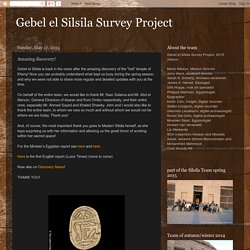
Now you can probably understand what kept us busy during the spring season, and why we were not able to share more regular and detailed updates with you at the time. On behalf of the entire team, we would like to thank Mr. Nasr Salama and Mr. Abd el Menum, General Directors of Aswan and Kom Ombo respectively, and their entire crew, especially Mr. Ahmed Sayed and Khaled Shawky.
ASSOCIATION MER ROUGE-SINAÏ. A Joint Expedition of The Metropolitan Museum of Art and The Ancient Egyptian Heritage and Archaeology Fund. Visir Amenhotep Huy. A Michael C. Carlos Museum and Metropolitan Museum of Art iSITE. t3.wy Foundation for Historical Research in Egyptology. Sakkara - Polska Misja Archeologiczna w Sakkarze - Polacy Nad Nilem. W kampanii 2010 wykopaliska prowadzono w bardzo ograniczonej skali, ich celem było zakończenie badań i dokumentacji obszaru, który będzie przedmiotem 5 tomu serii Saqqara, poświęconego nekropoli urzędników znajdującej się między zachodnim murem kompleksu grobowego Neczericheta a wschodnim brzegiem Suchej Fosy.
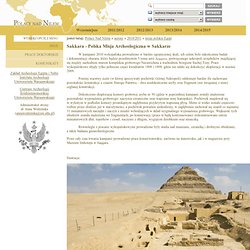
Prace wykopaliskowe objęły tylko północne części kwadratów 1808 i 1809, gdzie nie udało się dokończyć eksploracji w sezonie 2009. Poniżej warstwy dakki (w której spoczywały pochówki Górnej Nekropoli) odsłonięto bardzo źle zachowane pozostałości konstrukcji z czasów Starego Państwa – dwa niedokończone szyby oraz fragment (nie związanej z nimi) ceglanej konstrukcji. Dokończono eksplorację komory grobowej szybu nr 50 (gdzie w poprzedniej kampanii zostały znalezione pozostałości wyposażenia grobowego: naczynia ceramiczne oraz wapienne urny kanopskie).
Pochówek znajdował się w wykutym w podłodze komory prostokątnym zagłębieniu przykrytym wapienną płytą. Ilustracje: 1 a-b. 2 a-b. 3. Polish Centre of Mediterranean Archaeology UW: Projects. A Michael C. Carlos Museum and Metropolitan Museum of Art iSITE. TT184. This is the blog of the ERC starting grant project AcrossBorders. Misja Skalna w Deir el-Bahari. El Kurru: A Royal City of Ancient Kush. Thutmosis III Temple Project - Home. The excavation, restoration, conservation and site management project of the Mortuary Temple of Thutmosis III, located on the West bank of Luxor, first began in 2008.
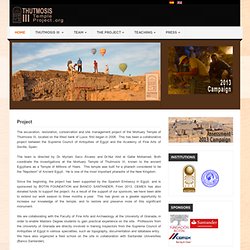
This has been a collaborative project between the Supreme Council of Antiquities of Egypt and the Academy of Fine Arts of Seville, Spain. The team is directed by Dr. Myriam Seco Álvarez and Dr.Nur Abd el Gafar Mohamed. Dayr al-Barshā Project. Visir Amenhotep Huy. Tell el-Daba-Homepage. South Asasif Conservation Project Blog. One of the primary aims of the 2013 season is the reconstruction of the western wall of the Second Pillared Hall of the tomb of Karakhamun.

Aside from the false door, the western wall and its two connecting pilasters are decorated with chapters of the Book of the Dead. While only the lower courses remain, enough hieroglyphs are preserved in-situ to allow for an identification of the texts (fig. 1). Once the texts have been identified, the challenge of searching through the many thousands of stone fragments begins in earnest. Texts that are being worked on are arranged on the ground. The Karnak Great Hypostyle Hall Project.
Accueil. Hisn al-Bab - ÖAI EN. This very well-preserved stone and mud brick fortress lies between the High and the Low Dams at Aswan in Upper Egypt, and close to the abandoned village of al Bab, on the east bank of the Nile at the southern end of the first cataract.
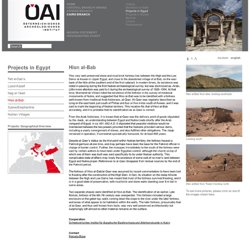
In modern times, its existence was noted in passing during the first Nubian archaeological survey, but was dismissed as ›Arab‹. Auaris, Avaris, Tell el-Daba. First two weeks. Time flies when having a great time, and indeed the two first weeks of our survey work passed so quickly.

We were told that we are late during our meeting in Aswan, when there to fill in the last paperwork before heading up to Silsila via the Kom Ombo office. “Late” one may then ask. Interactive Dig Hierakonpolis - Welcome. The largest site from the Pre- and Protodynastic period (3800-3100 B.C.), Hierakonpolis the City of the Hawk is the most important site for understanding the foundations of Egyptian civilization.
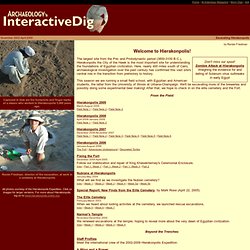
Here, nearly 400 miles south of Cairo, archaeological investigation over the past century has confirmed this vast site's central role in the transition from prehistory to history. This season we are running a small field school, with Egyptian and American students, the latter from the University of Illinois at Urbana-Champaign. We'll be excavating more of the breweries and possibly doing some experimental beer making! After that, we hope to check in on the elite cemetery and the Fort. The Karnak Great Hypostyle Hall Project. < < < .DJEHUTY. > > > Reisefieber. Das Grab des Neferhotep ist eines der größten Privatgräber in der etwa 800 dekorierte Felsgrabanlagen umfassenden Nekropole Thebens.
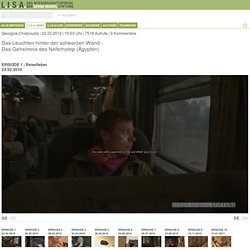
Neferhotep (»Schön ist die Gnade«) war oberster Schreiber des Schöpfergottes Amun und verstarb in der Regierungszeit des Pharaos Eje um 1320 v. Chr. Sein Felsengrab befindet sich am Fuße des thebanischen Gebirges nahe dem Tal der Könige. Als im 19. Jahrhundert englische und französische Forschungsreisende das Grab entdeckten, ist beim Umgang mit der Totenkammer einiges schief gelaufen: Das Verbrennen von Mumien verrußte die Wände, Wandmalereien und Hieroglyphen wurden bis zur Unkenntlichkeit geschwärzt, ihre Botschaften sind seither verschollen. Die drei Restauratorinnen Susanne Brinkmann, Birte Graue und Christina Verbeek versuchen seit 2005, das Rätsel der schwarzen Wand zu lösen, die Wandbilder nach mehr als 3000 Jahren wieder sichtbar zu machen. TT49 - Die Grabkammer des Neferhotep Ein Film von Dipl.-Rest. Christina Verbeek.
Willkommen. iMalqata. Ancient Egypt Research Associates. Tell el-Farcha online. Proyecto Visir Amenhotep Huy. Dayr al-Barshā Project. Tell el-Farcha online. The Tell Basta Project. Five days of extensive 3D scanning lie behind us and we have managed to document all areas and fragments from the temple as planned.
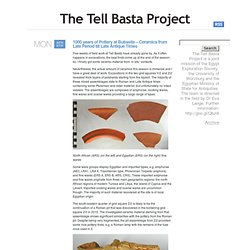
Our surveyors, Thomas and Mark, left this morning, quite tired after working day and night! During the day they were busy in the Old Kingdom necropolis and the Middle Kingdom palace, using a 3D laser scanner. 3D-scanning the Old Kingdom necropolis using a laser scanner This special scanner is particularly employed for large site scans and offers a high accuracy of measurement for ancient structures. In a first step, the survey points of the scanner were calibrated with a total station, then the actual scanning took place, creating a point cloud. Gurob Harem Palace Project. Työmiesmajat Theban vuoristossa -Projekti 2008–2013 julkaisut. EGIPTOLOGÍA: F. Martín y T. Bedman. Todos trataban de actuar y de protegerse contra las adversidades normales de la vida cotidiana.
Las enfermedades, las actuaciones de los enemigos, o los ataques de los animales dañinos, eran las preocupaciones más exigentes y perentorias a las que el hombre egipcio debía hacer frente. Finalmente, la superación de la muerte y la posibilidad de regresar al mundo de los vivos desde el Más allá, eran otras de sus mayores obsesiones. Para estar protegidos, o para conseguir sus fines, los egipcios utilizaron la magia. Pero esta magia era algo derivado del mundo divino que había tenido su nacimiento en el propio origen de lo religioso, de su relación con la divinidad.
El mundo de la magia tuvo su origen en el de los dioses En la lengua egipcia antigua el concepto de ‘dios’ se expresaba con el término Netcher. Gebel el Silsila Epigraphic Survey Project. South Asasif Conservation Project. Gurob Harem Palace Project. Proyecto dos cero nueve - · Home - Amarna Project. April 21, 2014April 9, 2014Great Aten Temple restoration, 2014April 9, 2014 <p>Subscribe to RSS headline updates from: <a href=" />Powered by FeedBurner</p> The ancient Egyptian city of Tell el-Amarna (or simply Amarna) was the short-lived capital built by the ‘heretic’ Pharaoh Akhenaten and abandoned shortly after his death (c. 1332 BCE).
It was here that he pursued his vision of a society dedicated to the cult of one god, the power of the sun (the Aten). As well as this historic interest Amarna remains the largest readily accessible living-site from ancient Egypt. Proyecto dos cero nueve - · MAFTO. Amara West research project. North Abydos Votive Zone Project. North Abydos Votive Zone Project. Oxford Expedition to Egypt (OEE) Home. KV-63. Saqqara.nl Homepage. Hypogées - Mission Archéologique Française du Bubasteion à Saqqara. Dayr al-Barshā Project. Karnak - CFEETK – Centre Franco-Égyptien d'Étude des Temples de Karnak – CSA / USR 3172 CNRS. Theban Mapping Project.